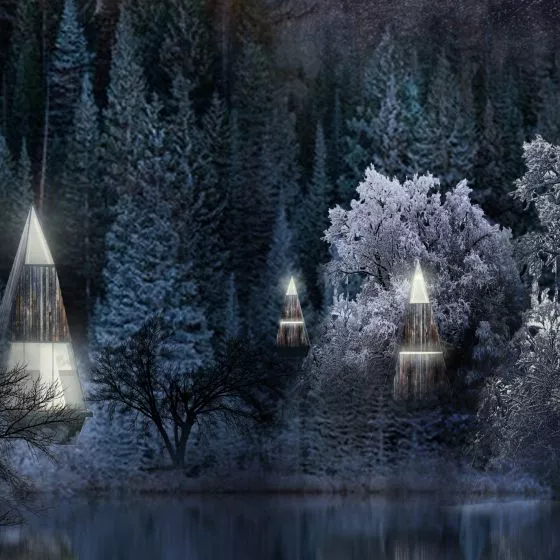Karolina Chodura's thesis entitled. "Topography of oblivion" is a project addressing the problem of revitalization of places with a traumatic history, made at the Faculty of Architecture of the Silesian University of Technology under the direction of Dr. Jan Kubec.
The Museum and Park of Remembrance on the site of the former Lebanon quarry in Krakow is a proposal to commemorate a place with a difficult history. Karolina Chodura was inspired by Martin Pollack's essay titled. "Tainted Landscapes," she drew attention to spaces called "topographies of oblivion." These are sites of mass graves, absorbed into the landscape, where the natural topography of the terrain served to conceal the crimes. One of them is the Liban quarry in Krakow, where the Nazis set up the Płaszów labor camp (later concentration camp) during World War II.
The designed elements are non-invasive, minimalist forms
© Karolina Chodura
silence of emptiness
The emptiness of the space, analogous to silence in music, encourages contemplation. When designing the complex, the author's basic idea was to create commemorative forms, so as not to lose the austere atmosphere of the place and its emptiness. The resulting elements are non-invasive, minimalist field forms. The only exception is the monumental mass of the museum located above the ravine, at the entrance to the quarry.
memorial park
The park on the quarry site consists of objects commemorating the sites of mass graves. The author designed them without using unambiguously associated symbols. Often they are furrows in the ground, cuts, depressions, hills and hillocks. Sometimes the interventions consisted only of moving a mass of earth from one place to another. Footbridges scattered across the quarry floor break off suddenly, leading the visitor nowhere. The forms produced are not foreign elements - they are built from local materials, soil and rock. Like the entire park area, most of the objects present are subject to the influence of nature, changing, showing the destructive effect of time.
The museum building is a massive monolith
© Karolina Chodura
museum of topography of oblivion
The museum's building, based on three massive pillars, is a massive monolith, which is part of the trend of site-specific and geomimicry projects. Like the surrounding terrain, it is subject to change. The facade of the building, subjected to atmospheric action, is transforming - eroding, collecting water, discoloring, overgrowing with grass. On the roof of the building, the author created the Void Garden.
Lebanon quarry area
Photo: Karolina Chodura
The work draws attention to an often unnoticed aspect of the landscape and its difficult history. The diploma also focuses on reminding the residents of Krakow about the Liban quarry and literally integrating it into the urban fabric by creating a place of reflection, which is the proposed museum.
The project won first prize in the Zbyszek Zawistowski SARP Annual Award competition - Diploma of the Year 2019.
Karolina Chodura, together with Joanna Rozbrój, are laureates of the Grand Prix and First Prize in Competition A of this year's Architecture Biennale.
compiled by: {tag:AuthorAiB}
illustrations courtesy of Karolina Chodura









































